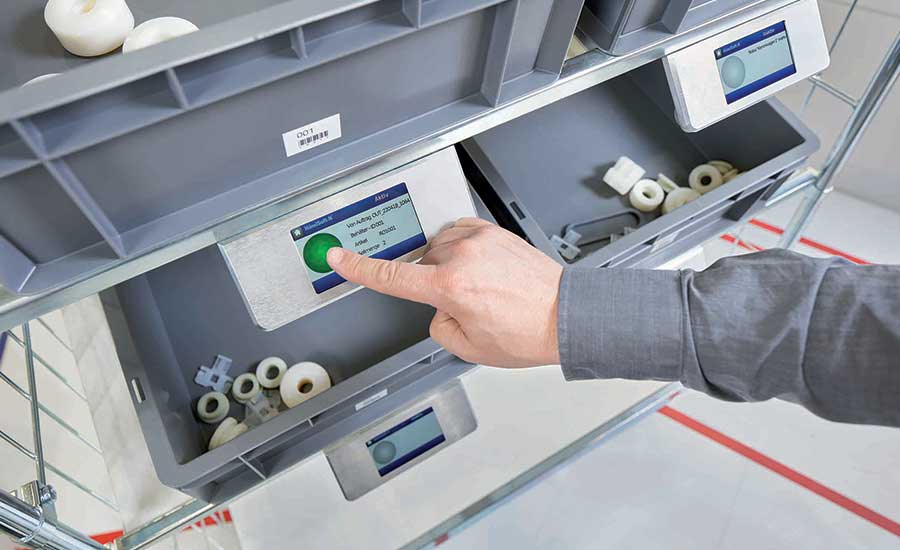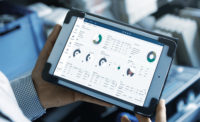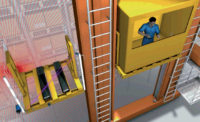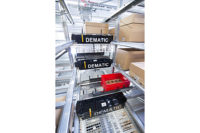Just like how location, location, location is key to successful real estate deals, automation, automation, automation is key to keeping up with the Joneses’ of cold food and beverage processing. This includes incorporating wearable technology, Internet of Things (IoT), blockchain solutions and more. And, with the influx of e-commerce and direct-to-consumer distribution, the overall workings of a supply chain are more complex than ever.
That’s why many of today’s automated storage and retrieval systems (AS/RS) offer better visualization and the ability to handle variability, variety and high volume at higher speeds, according to a study published by Mordor Intelligence, Boston.
Labor wages are said to be one of the bigger expenses for any manufacturers. Adopting an AS/RS helps food and beverage manufacturers gain efficient material handling solutions, the study says. The need for frequent, safe and fast handling of packages also fuels growth for AS/RS market globally. And, the purchasing pattern is shifting toward online shopping, and AS/RS deliver additional benefits such as optimum space utilization and increased control over inventory.
“We rely on automation because it is the proverbial well-oiled machine,” says David Phillips, marketing manager of Hanel Storage Systems, Pittsburgh, Pa. “It keeps working, seemingly effortlessly and always runs the same way every time. Everyone knows that ‘to err is human,’ but there is no room for human error in automation. It does what we cannot. Automation increases productivity by reducing the time it takes to perform repetitive tasks. It doesn’t get bored or make mistakes, and it saves time and money in the process. In the food and beverage industry, there are so many points at which workers must come into contact with food, and this can affect the ability to monitor its quality. Wherever people come into contact with food, there is an increased likelihood of contamination. Automation changes this because defects can be easily detected and then programmed out of the process. The same mistakes are never made again, productivity has increased for the future and defective or possibly contaminated goods are kept from reaching the public.”
Furthermore, the overall AS/RS market, in particular for refrigerated and frozen foods, is “clicking on all cylinders,” according to Bill Leber, director of business development Swisslog Logistics Automation Americas, Newport News, Va.
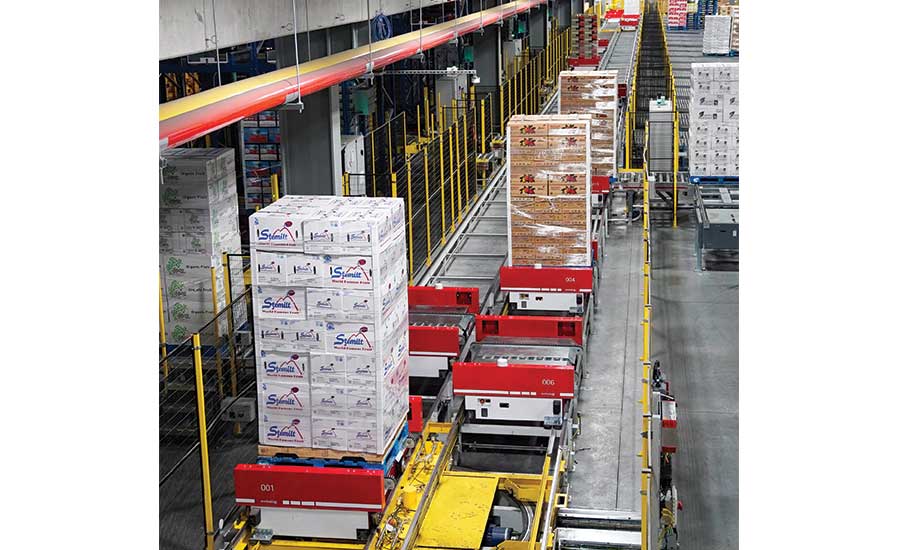
Swisslog worked with Stemilt Growers to help the grower and distributor of fresh fruits consolidate inventory into one automated distribution center.
“Long-term storage, once dominant, now represents a fraction of total warehouse income in many facilities. Today’s cold chain facilities must accommodate higher-turn velocity inventory. New high throughput shuttle-based systems have expanded the fit for AS/RS. This is one of key aspects we are hearing from the market,” Leber says.
Likewise, the increased reliance on automation is due primarily to the limited labor force and the lack of interest by today’s workforce to support a conventional warehouse operation, says Brad Moore, vice president sales, Viastore, Grand Rapids, Mich.
“E-commerce drives order quantities down smaller and smaller (down close to one item per order) and by far smaller than retail-focused facilities,” he adds. “E-commerce and the promises of the e-commerce short delivery times requires a significant decrease in the lead times, and this a significantly higher fluctuation of hour-by-hour demand.”
Also key to effective utilization and process optimization is safety.
“Efficiency, process visibility and safety are all improved with the use of new sensing technology, from traditional photoelectric sensor types to vision-based solutions,” says John Ashodian, segment marketing manager for SICK, Inc., Minneapolis. “Deep learning, analytics and remote monitoring of functions are also playing a bigger part in operational efficiency, and sensors are at the heart of that shift because they provide the information needed to make the machine more efficient and safe.”
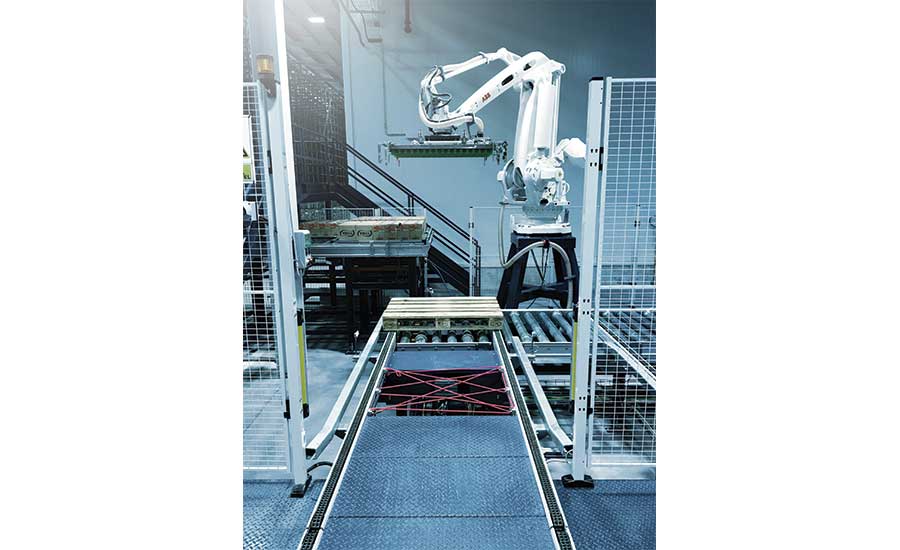
Viastore introduced fully integrated refrigerated and frozen pallet AS/RS for production, distribution and 3PL support, including automated layer picking, semi-automated individual case picking and automated transport to the shipping dock.
New solutions move product up and out
The AS/RS market is expected to witness a CAGR of 10.18% during the forecast period 2019-2024, according to the Mordor Intelligence study. And, most of this is due in large part to new AS/RS developments designed to move product up and out.
For instance, Viastore introduced fully integrated refrigerated and frozen pallet AS/RS for production, distribution and 3PL support, including automated layer picking, semi-automated individual case picking and automated transport to the shipping dock.
For its part, Hanel introduced Smart Picking, a pick-and-put system that relies on commercially available “off-the-shelf” web devices. Hanel also introduced a Lean-Lift Vertical Lift Module enabled with storage system operation via smartglasses, which is said to be the first solution of its kind worldwide. A user wears smartglasses to view inventory information in one lens of the glasses while performing warehouse transactions through pick-by-voice. The user verbalizes the desired shelf to be brought from storage, and the Hanel unit automatically brings it to the access point.

Hanel Storage Systems collaborated with IT specialists at MAN to link two Hanel Lean-Lift systems to SAP and enable storage system operation via smartglasses.
And, Swisslog worked with Stemilt Growers to help the Wenatchee, Wash.-based grower and distributor of fresh fruits consolidate inventory into one automated distribution center.
“Very clear–automation drives improved performance and reliability vs. manual operations,” says Leber. “Reliability of automation today is far better than what has been experienced in the past, in large part due to IoT, or better termed ‘remote monitoring/remediation.’ Moving forward, condition monitoring of key components is starting to replace time-scheduled preventative maintenance, further reducing costs and increasing up times.”
Swisslog is also developing a “digital twin” model of the key drive component that enables supervisory controls to perform proactive part changes upon end-of-life, and alert end-users of components performing outside acceptable norms.
Despite the influx of more complex supply chains, today’s AS/RS are in position to handle variability, variety and high volume at higher speeds.
Click here to learn more about these and other automated storage retrieval systems.
